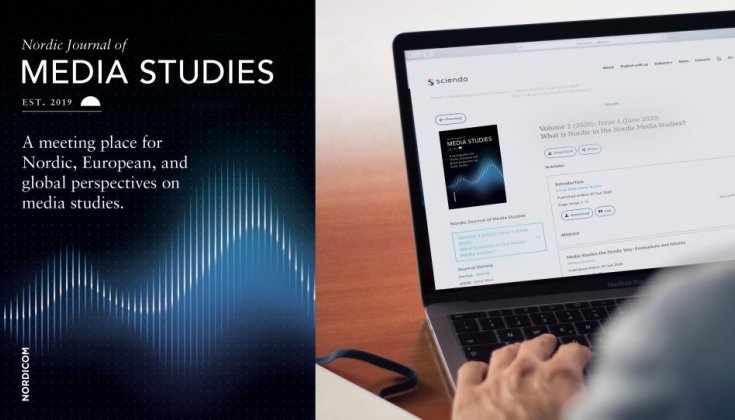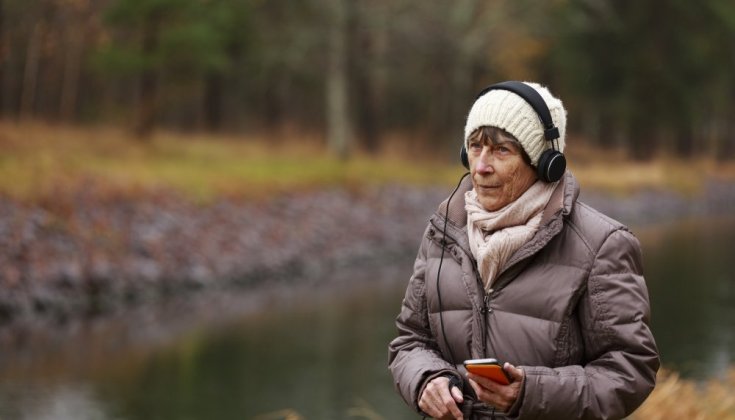News
Find news about Nordic media research and media development together
with news about Nordicom's activities.

New book highlights state of knowledge on information ecosystems and democracy
How do news media, artificial intelligence, and data governance shape the information we rely on? And what does this mean for democracy and human rights? A new book, published by Nordicom, reviews the global state of research on these topics – and points to urgent gaps that need to be addressed.
News industry revenue remains stable – according to new report
Swedish news media increased their revenues by around 1 per cent to a total of 13.9 billion Swedish kronor in 2024. This is shown in the new report Svensk marknad för nyheter [The Swedish News Market], produced by Nordicom on behalf of the Swedish Agency for the Media. The report also shows that news media as a whole achieved an operating margin of just over +3 per cent – a key indicator used to measure profitability.
Clear generational differences in Swedes’ TV viewing habits
Swedes’ ways of engaging with audiovisual media have changed fundamentally. Traditional scheduled television has gradually lost ground, while streaming services such as Netflix, SVT Play, and YouTube now dominate viewing habits. This is shown in a new report from Nordicom, which also highlights clear generational differences.
Communication in the service of the state – what does the research say?
The debate on government agencies’ communication flares up from time to time – it can be about campaigns, costs, or the number of communications officers employed. In a new book, two researchers provide an overview of Swedish government agencies’ communication activities. The book concludes with a summary of the most important lessons in seven points.
Call for Papers: Scandalisation across media: New scandal trajectories, temporalities, and actors
Nordic Journal of Media Studies invites contributions to the 2027 issue exploring how scandals unfold and are communicated across media.
New book on information ecosystems and democracy to launch in November
A new book assessing global information ecosystems and their impact on democracy will be launched on 26 November 2025 by the Free University of Brussels – SMIT (Studies in Media, Innovation & Technology Research Group) and the Observatory on Information & Democracy. The book is being published by Nordicom.
Digitalisation is reshaping Swedes’ listening habits
Swedes’ listening habits are changing with digitalisation. Streaming music dominates, podcasts are growing rapidly, and traditional radio is losing ground. This is shown in a new report from Nordicom, which also highlights clear generational and geographical differences in listening culture.
Vacancy: Nordicom seeks researcher
Nordicom is seeking a new researcher to contribute to deepening knowledge about the role and conditions of the media in Sweden and the Nordic region.
New issue explores the impact of social media influencers
Social media has transformed the way we connect, consume, and communicate. At the centre of this shift are influencers who shape opinions, drive conversations, monetize, and bring niche topics into the mainstream. The latest issue of Nordic Journal of Media Studies examines their growing impact on culture, communication and commerce.
New special issue: What we know about media and democracy in the Nordics
A new special issue of Nordicom Review brings together literature reviews that aim to answer the simple but crucial question: What do we know about media, communication, journalism, and democracy in the Nordics?
Call for papers: Visual Political Communication in the Nordic Region: Strategies, Narratives, and Challenges in a Digital Age
Franziska Marquart (University of Copenhagen) and Xénia Farkas (DIGSUM, Umeå Univesity) invite scholars from the fields of media, communication, political science, and related disciplines to submit extended abstracts for a special issue of Nordicom Review. This issue will explore the evolving landscape of visual political communication in the Nordic countries, focusing on comparative aspects, content, and effects of visual politics in Denmark, Finland, Iceland, Norway, and Sweden.
